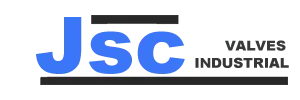Essential Considerations for Installing Y-Type Strainers
The Y-type strainer, as a crucial component of pipeline systems, plays a vital role in removing impurities and particles from fluid streams. Its correct installation and effective maintenance are essential to ensure equipment operational stability and extend equipment lifespan. During the installation of Y-type strainers, several key considerations must be carefully observed to ensure their efficient operation and facilitate convenient maintenance in the future.

1. Globe Valves Installation
During Y-type strainer installation, it is imperative to place globe valves upstream and downstream. These valves not only temporarily halt fluid flow for inspection and cleaning but also effectively isolate the Y-type strainer, simplifying maintenance operations. By closing these valves, safe maintenance is ensured, minimizing system downtime.
2. Optimal Installation Locations Choice
Choosing the right installation position for Y-type strainers is critical depending on specific applications. For instance, when used in HVAC system return pipes, Y-type strainers can efficiently capture suspended matter and particulate impurities from cooling towers, preventing blockages and equipment damage. Selecting installation locations that meet system requirements maximizes equipment protection and optimizes system performance.
3. Integrate Pressure Gauges for Monitoring
Installing pressure gauges at both inlet and outlet of Y-type strainers is crucial. These gauges provide real-time feedback on the strainer's operational status. Significant differences in readings between upstream and downstream pressure gauges indicate a buildup of impurities in the strainer, necessitating timely cleaning to restore normal filtration efficiency.
4. Sufficient Maintenance Space Consideration
Ensure sufficient space is allocated around the Y-type strainer for maintenance and servicing tasks. This includes easy access for routine inspections, cleaning, and replacement of filter screens. Well-designed maintenance spaces enhance efficiency and reduce operational risks during maintenance procedures.
5. Ensuring Correct Fluid Flow Direction
Whether horizontally or vertically installed, it is essential to ensure fluid flows through the Y-type strainer in the direction indicated by the flow arrow on the strainer itself. This ensures effective operation, maximum capture of impurities and particles, and maintains system stability and long-term effectiveness.
6. Selecting Suitable Filter Screens
Choosing the right filter screen is critical based on fluid properties and expected particle sizes. Typically, the mesh size of the filter should be smaller than the largest particles in the fluid to ensure effective filtration and prevent equipment blockages and damage. For specialized applications such as high temperature or high-pressure conditions, filters made from materials resistant to corrosion and high temperatures should be selected to ensure long-term stable operation.
7. Regular Inspection and Cleaning
Implementing a scheduled inspection and cleaning regimen is recommended to maintain the Y-type strainer in optimal operational condition. Especially in systems handling fluids with high levels of impurities, such as industrial wastewater treatment systems, regular cleaning of filter screens effectively extends their service life and reduces performance degradation and equipment failures caused by impurity buildup.
8. Consider Additional Equipment Installation
In certain specialized applications, consider installing additional equipment to enhance the functionality of Y-type strainers. For example, automatic cleaning devices or alarm systems can monitor the strainer's operational status and alert maintenance personnel for necessary cleaning or replacement operations, further optimizing pipeline system efficiency and safety.
In conclusion, installing Y-type strainers involves attention to detail, including setting isolation valves, selecting appropriate installation locations, installing pressure gauges, ensuring adequate maintenance space, and verifying correct fluid flow direction. These steps not only ensure the effective operation and filtration efficiency of Y-type strainers but also extend the lifespan of pipeline systems and equipment, reducing maintenance costs and system downtime, thereby providing reliable assurance for pipeline engineering projects.

